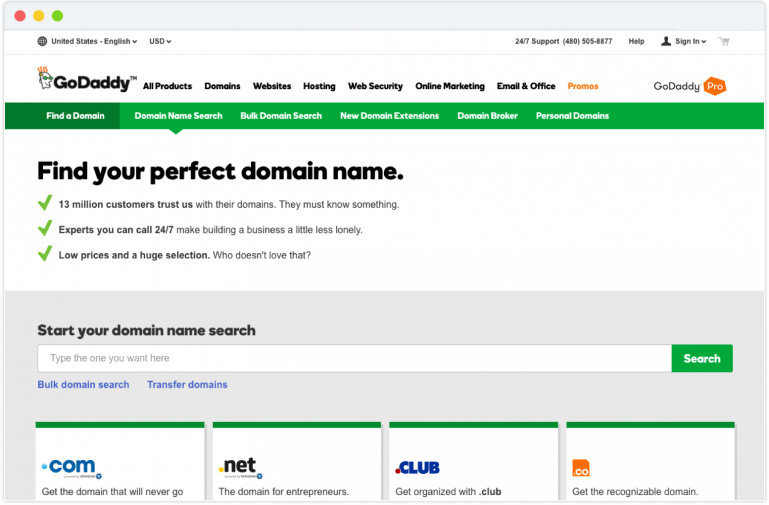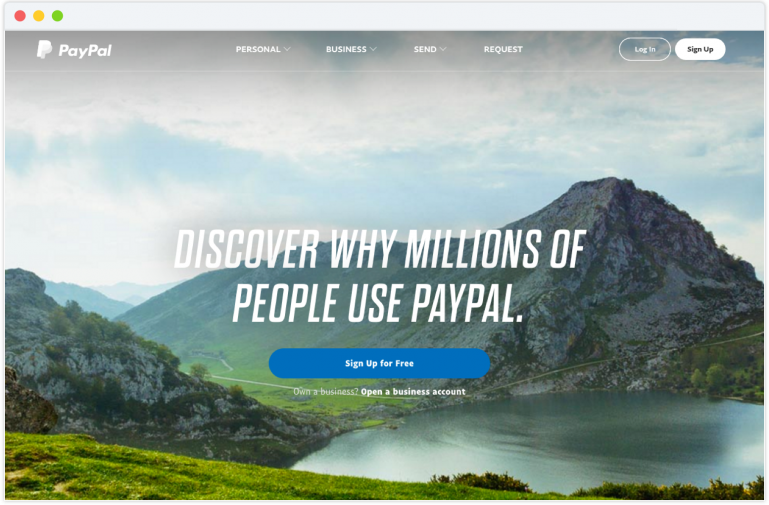
How to Build a Retail Website
Online shopping and eCommerce sales are becoming more important than ever before for consumers and for small businesses, which makes it crucial for small retail businesses to learn how to build their own retail websites.
According to stats cited by Bloomberg, as of Q1 2015, online sales had increased by 14.5% year-over-year, compared with a 1.6% increase in total retail sales. Many small business owners know that they are ready for a retail website, but they feel overwhelmed by all the details, features and options for how to build one.
As a rule of thumb, eCommerce is not appropriate for all retail businesses, nor will all retail businesses have the bandwidth and resources to maintain and manage an online site. But if you feel as if it’s time for your business to take that next step, check out this simple guide for how to build a retail website for your small business and get started with eCommerce.
Choose a Website Infrastructure
Every retail website needs infrastructure — the “bones” and back-end of the website — to host all the site’s data and integrate with the eCommerce platform that you will use to make online sales. You need to decide if you want to build your website infrastructure yourself (known as “open source”) or choose a web hosting provider.
Open source gives you the most flexibility and control over your site, but the drawback is, it takes time and expertise to be able to build a website from the ground up. You might need to hire web developers to create your site, and that can be expensive. Also, depending on what you want to do with your retail site, there might already be a template that you can use, instead of re-inventing the wheel with an 100% original site.
Instead of building your own site infrastructure, it often makes more sense to go with a web hosting provider. This option is easier, faster, cheaper, and often more reliably secure, because your hosting provider can also ensure that your site gets automatic security updates. Having your site hosted by a web hosting provider gives you less control over some features and elements of the site, but depending on what you sell and how you run your business, you probably won’t mind — you’ll still get to control all of the important features that affect your sales and your business success. Some of the most popular web hosting services include GoDaddy, Bluehost, and HostMonster.
Buy a Domain Name
Do you already have a business name and brand identity? If so, your next step is to buy a domain name for your website. For example: SmallRetailStore.com Your domain name is your retail website’s “street address” that gives you a place in the eCommerce world and makes it easy for customers to find your business. Your domain name needs to be clearly connected to your business name — ideally your business name should be part of the domain. Your domain also needs to be easy to find via web searches. Try to make a list of a few possible domain names, and then use GoDaddy domain search to see if your preferred domain name is still available. Sometimes when you check availability, you’ll find out that your first choice is already being used by someone else.

Design Your Website
Every retail website, no matter how small, needs to have a clean, inviting website design that attracts attention from visitors and makes it easy for customers to buy from you. Web hosting services often offer web design help, or website templates. There are also website templates available for a small fee, or even for free. For example, check out ThemeForest to choose from thousands of website templates — you can often get all the features you want at an affordable price. Another template option is Wix, which offers a variety of simple website templates for online stores — you can choose a design based on what type of products you sell at your retail store. Or if you want a more elaborate website with specialized features and a one-of- a-kind design, you can hire professional freelance help from web developers. If you’re hiring freelance web developers, this would be a good occasion to get funding from retail business loans, so you can get working capital to pay your freelancers.
Set Up Your Online Store
The goal of every retail website is the same: to sell! Your website needs to be as efficient and inviting as possible at getting customers to buy from you. The design needs to make it easy and seamless – show customers what to do at every step of the way to click “Buy” and “check out” and close the sale. If your site is hard to use, customers will get confused and frustrated, and will abandon their purchase before closing the sale. If your site takes too long to load on mobile devices, customers will bail out and go visit your competitors instead. This is one reason why your site needs to be mobile-friendly — in fact, it’s often best to design your website with the goal of being “mobile-first.” Make sure the buttons are big, make sure the instructions are easy to read, and make sure the process of making a purchase is clear and intuitive.
Choose an online payment processor, such as PayPal, Google Wallet, Dwolla, or others. Your website host or website template will often have built-in options for accepting payments, but make sure you set up your site with the processors of your choice — while reading the fine print and understanding the fees involved.

Create Payment and Refund Policies
Your retail store needs to have established policies for payments, returns and refunds. Put it in writing and make your policies available to customers via your website. Check out applicable state, federal and local laws for returns and refunds, and consult with an attorney if needed. You can also find online templates for return policies to use for your website. It’s good to have written policies, but don’t be too strict — if your policies are too unforgiving, customers might get turned off and decide to shop elsewhere.
Choose Shipping Methods and Fees
One of the essential elements of a retail website is shipping — actually fulfilling the customer’s order, packaging, and delivering it to the customer. A great shopping experience can be undone by a bad “shipping experience” — if your shipping solution is delivering packages late, or damaging the goods inside, your customers are likely to be upset with you and will take their business to a competitor. Do your research on the best, most affordable shipping options for your types of products and based on your location: start with the U.S. Postal Service, UPS, or FedEx. Another option, if you sell products via Amazon, is to use Fulfillment By Amazon to handle the packaging and shipping of your products, for a small fee. This can help your business save time, money, and warehouse space — but it also removes an element of control
for carrying out the final stage of the customer experience.
You also need to choose a shipping fee strategy. For example, do you want to offer free shipping on minimum orders, charge a flat fee for shipping, include shipping in the listed price of products, or ask the customer to pay the full shipping charge? Different shipping fee strategies will affect your overall sales, so choose carefully — and be prepared to adjust your pricing as needed.
Tell the World About Your Site
Now that your site is up and running, it’s time to start marketing your retail website! Ideally, you should choose a few key marketing channels and then execute a variety of marketing tactics on a regular basis. For example:
- Use Search Engine Optimization (SEO) to make your site easy for search engines to find.
- Use email marketing campaigns to build customer relationships with special offers, coupons, email newsletters, and more.
- Use Pay Per Click (PPC) ads to drive more traffic to your site — and create special landing pages for each PPC offer.
- Use content marketing: create a blog, start a podcast, make YouTube videos, share infographics — whatever form of content marketing sounds fun to you. By sharing helpful information with your customers, you will be building trust and creating business relationships.
With online sales continuing to grow much faster than overall retail sales, it’s more important than ever for small retailers — those with the bandwidth to manage an additional storefront — to get set up with an effective retail website. Make sure your site is mobile-friendly, with an easy-to-follow online shopping process. Keep in mind that even if your site doesn’t look exquisitely beautiful, as long as the site is easy to use and easy to understand, it will likely be more successful than an expensively designed site with too many bells and whistles. The purpose of your retail website is to sell — so keep experimenting and adjusting to do whatever it takes to reach that goal.
Want to try ShopKeep for yourself?
Just answer a few easy questions.
Need help finding the right point of sale?
Just complete the form. We’ll call you right back to explain how ShopKeep can work for you.
Hit the ground running.Sprinting, in fact!
Read our free, comprehensive guide, Small Business 101, to learn all you need to know about starting a thriving business.

